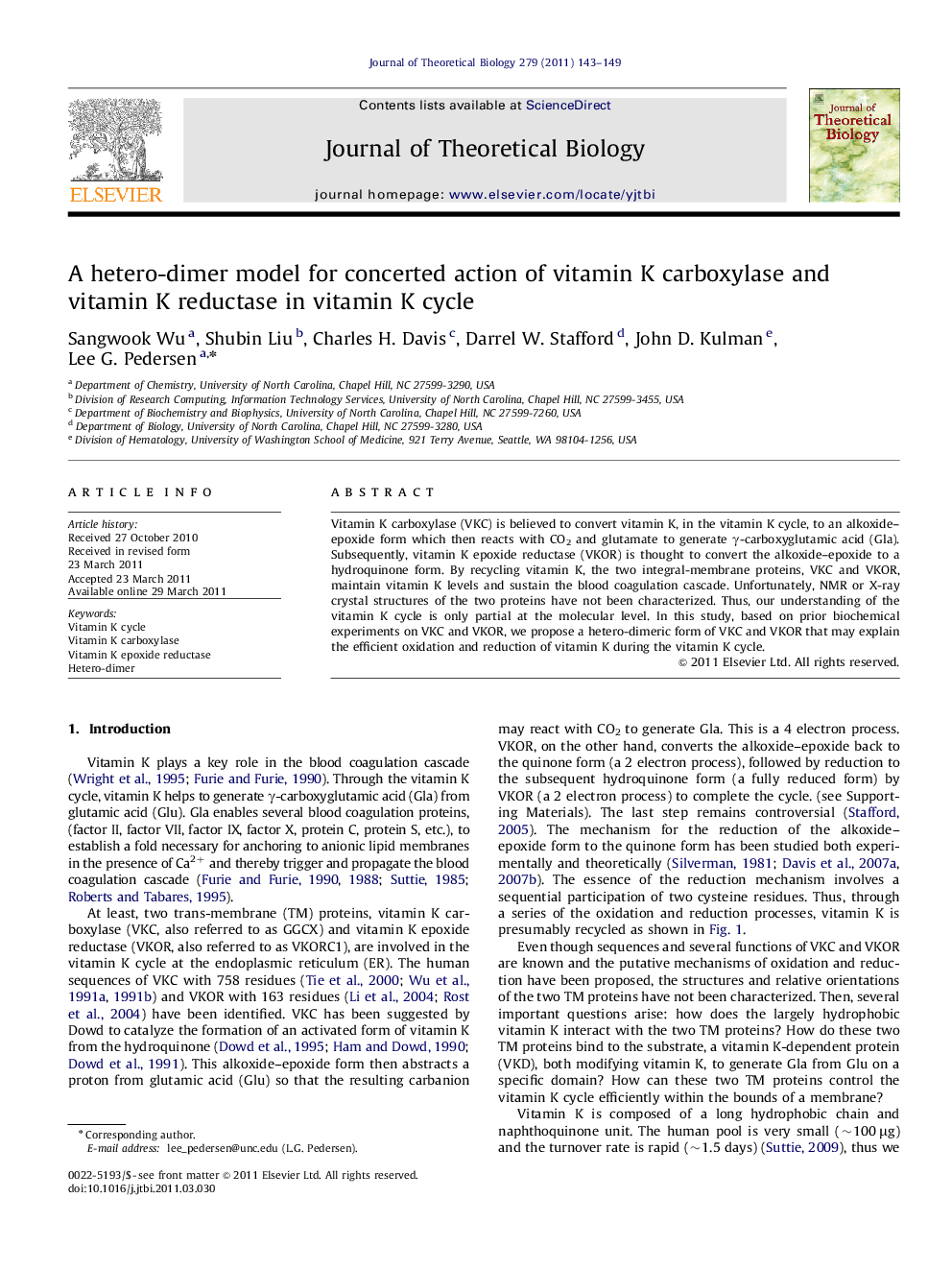| Article ID | Journal | Published Year | Pages | File Type |
|---|---|---|---|---|
| 4497105 | Journal of Theoretical Biology | 2011 | 7 Pages |
Vitamin K carboxylase (VKC) is believed to convert vitamin K, in the vitamin K cycle, to an alkoxide–epoxide form which then reacts with CO2 and glutamate to generate γ-carboxyglutamic acid (Gla). Subsequently, vitamin K epoxide reductase (VKOR) is thought to convert the alkoxide–epoxide to a hydroquinone form. By recycling vitamin K, the two integral-membrane proteins, VKC and VKOR, maintain vitamin K levels and sustain the blood coagulation cascade. Unfortunately, NMR or X-ray crystal structures of the two proteins have not been characterized. Thus, our understanding of the vitamin K cycle is only partial at the molecular level. In this study, based on prior biochemical experiments on VKC and VKOR, we propose a hetero-dimeric form of VKC and VKOR that may explain the efficient oxidation and reduction of vitamin K during the vitamin K cycle.
